by Lorri | Apr 11, 2012 | UnCorked
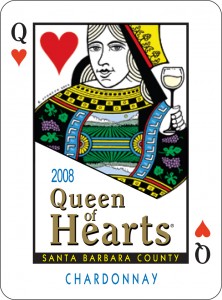 If cabernet sauvignon were known as “king” of the wine world, then chardonnay would be “queen.”
If cabernet sauvignon were known as “king” of the wine world, then chardonnay would be “queen.”
Like a chameleon tweaking its pigmentation to blend into its environment, chardonnay’s versatility knows few bounds. It can be left “naked” or treated with oak, undergo malo-lactation, be aged sur lie (French for on the lees, the sediment of grape particles and dead yeast cells that accumulates during fermentation) or even blended with other grapes, with each bottle revealing a diverse profile.
It’s a happy-go-lucky grape known by many as the “vineyard growers dream” — easy to please, no hassle, grows in diverse climates, diverse soils and, to the growers’ pleasure, produces incredibly high yields.
It is no wonder chardonnay lines the retail store shelves in so many styles and price ranges.
Even with its range and versatility, not all chardonnay is created equal, with some regions producing distinctive styles.
PLAYING IT COOL
Chablis is the coolest part of Burgundy and is noted for its unique Kimmeridgian soils (soil with fossilized shells). This combination of climate and soil means the chardonnay grape must struggle to ripen, resulting in a more steely, crisp style, quite unlike the full-bodied flavors from warmer climates.
THE VALUE
- 2010 Joseph Drouhin Chablis, France (about $26 retail)
THE SPLURGE
- 2010 Jean-Marc Brocard Monte de Tonnerre Chablis, France (about $47 retail)
HOME IS WHERE THE HEART IS
Comprising the southern half of Burgundy’s famed Cote d’Or (slope of gold) is the Cote de Beaune, Chardonnays’ sacred ground. Chardonnay from this region is considered to be the best of the world.
To really get to know the homeland in which chardonnay is worshiped you will need to get to know the various regions because the styles can range from buttery, creamy, nutty and even light-bodied depending on the producer and vineyard.
The producers tend to use a mixture of used and new oak for their best chardonnays.
THE VALUE
- 2009 Olivier Leflaive Puligny Montrachet, France (about $64 retail)
THE SPLURGE
- 2009 Girardin Les Combettes Puligny Montrachet, France (about $90 retail)
CALIFORNIA DREAMING
California chardonnay is extremely varied, from rich complex styles to the heavy, high alcohol sweet styles. And with the varying styles come a range in prices. You’ll find some of the most exceptional examples of this grape’s complexity in the cooler regions of Sonoma, Napa and Carneros.
THE VALUE
- 2010 Robert Mondavi Napa Valley Chardonnay, California (about $22 retail)
THE SPLURGE
- 2009 Kistler Les Noisetiers Sonoma Chardonnay, California (about $70 retail)
DOWN UNDER
Australian chardonnay has a distinctive citrus, lime flavor when grown in ideal conditions and with a reliable producer. (The best are Adelaide Hills or Margaret River.) If the wine label simply states “Southeastern Australia” or “Australia” without listing a specific region it is most likely made with blended fruit from numerous regions.
These blends may make great bargains, but they are not for aging.
THE VALUE
- 2010 Grant Burge Chardonnay, Australia (about $26 retail)
THE SPLURGE
- 2010 d’Arenberg Lucky Lizard Chardonnay, Australia (about $49 retail)
by Lorri | Apr 4, 2012 | UnCorked
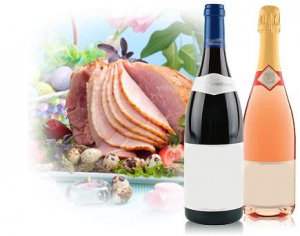 Ham at Easter dinner is a common tradition the world over, and the American table is no exception. However, ham tends to be a tricky match for wine. Cooks in many parts of the world, particularly those who have been curing ham and making wine for centuries, have mastered this task. Prosciutto, jamon and presunto — with their straightforward smoky, salty flavors — are not frequently mismatched at Easter tables in Italy, Spain and Portugal.
Ham at Easter dinner is a common tradition the world over, and the American table is no exception. However, ham tends to be a tricky match for wine. Cooks in many parts of the world, particularly those who have been curing ham and making wine for centuries, have mastered this task. Prosciutto, jamon and presunto — with their straightforward smoky, salty flavors — are not frequently mismatched at Easter tables in Italy, Spain and Portugal.
It’s primarily at the American table that things get complicated. When you add ingredients such as honey and cloves, or serve a ham with a brown sugar-pineapple glaze, the once salty ham becomes a salty-sweet canvas of conflicting flavors. The wrong wine pairing will result in competing flavors and aromas that can accentuate bitterness and tannins found in wine.
Look for light red wine without overpowering tannins and white wine without searing acidity. A few of the best matches are merlot, pinot noir, rose, Riesling, gruner veltliner, Beaujolais and Chablis.
THE VALUES
- 2010 Cline Cool Climate Sonoma Coast Pinot Noir, California (about $15 retail)
- 2009 Oriel Or tolan Falkenstein Gruner Veltliner, Austria (about $25 retail)
- 2010 Hogue Cellars Genesis Riesling, Washington (about $14 retail)
- 2010 Georges Duboeuf Chateau de Vierres Beaujolais Villages, France (about $15 retail)
THE SPLURGES
- 2009 Bell Wine Cellars Yountville Merlot, California (about $36 retail)
- 2009 Jean Marc Brocard Monte de Tonnerre Chablis, France (about $44 retail)
- NV Delamotte Brut Rose Champagne, France (about $99 retail)
- 2009 Presqu’ile Vineyards Pinot Noir, California (about $64 retail)
by Lorri | Mar 28, 2012 | UnCorked
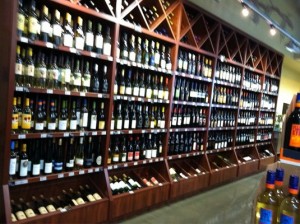 Finding the perfect wine to enjoy with your meal can range from an all-out ordeal to a matter of blind chance. With the vast array of wine and food choices, the combinations are seemingly endless.
Finding the perfect wine to enjoy with your meal can range from an all-out ordeal to a matter of blind chance. With the vast array of wine and food choices, the combinations are seemingly endless.
However, some wines complement a wider variety of foods than others. Committing these top 10 food-friendly wines to memory (or at least making a list to keep handy) can help ease the uncertainty when faced with a wine list at a restaurant or picking up a bottle to go with dinner at home.
Dry rose deserves recognition for its versatility. This style matches effortlessly with salads or mildly spiced dishes, and makes an all-around safe pick for almost any light spring or summer menu.
THE VALUE
- 2010 Presqu’ile Winery Dry Rose, California (about $21 retail)
THE SPLURGE
- 2010 Domaine Serene Dry Rose, Oregon (about $34 retail)
“Naked” chardonnay is more approachable than its overbearing, extremely oaky cousins that can overwhelm even the most robust dishes. Unoaked chardonnay pairs well with lighter foods such as chicken, salmon and some pork dishes.
THE VALUE
- 2011 Simply Naked Unoaked Chardonnay, California (about $10 retail)
THE SPLURGE
- 2010 Mer Soleil Silver Chardonnay, California (about $40 retail)
Light-bodied whites such as sauvignon blanc, semillon, Riesling, pinot blanc and pinot grigio are safe bets with almost any salad or vegetarian dish. They also pair well with fish, chicken, pork and pasta. Pinot grigio’s easy drinking style and light body make it an ideal starter wine, but it can carry an entire meal too.
THE VALUES
- 2011 Mezzacorona Pinot Grigio, Italy (about $10 retail)
- 2010 Trimbach Pinot Blanc, France (about $20 retail)
THE SPLURGES
- 2010 King Estates Acrobat Pinot Gris, Oregon (about $16 retail)
- 2011 Stoneleigh Sauvignon Blanc, New Zealand (about $24 retail)
Albarino is a sure bet with almost any fish dish. This luscious dry white Spanish wine also works well with rice and pasta dishes.
THE VALUE
- 2011 Martin Codax Albarino, Spain (about $19 retail)
THE SPLURGE
- 2011 Mar de Frades Albarino, Spain (about $28 retail)
Merlot is the red wine known for not only its crowd-pleasing fruity style but also its ease when matched with a wide range of foods. It is a safe bet for dishes with more body, spice and weight.
THE VALUE
- 2010 Michel Lynch Merlot, France (about $12 retail)
THE SPLURGE
- 2009 Rutherford Ranch Merlot, California (about $20 retail)
The light fruity style of pinot noir is a sound choice for lighter meats, pastas and fish.
THE VALUE
- 2009 Mirassou Pinot Noir, California (about $12 retail)
THE SPLURGE
- 2009 Ponzi Vineyards Tavola Pinot Noir, California (about $27 retail)
by Lorri | Mar 21, 2012 | UnCorked
 New Zealand is known for its exceptional-quality sauvignon blanc, but what it may be best remembered for 30 years from now is transforming the way the wine world seals its product.
New Zealand is known for its exceptional-quality sauvignon blanc, but what it may be best remembered for 30 years from now is transforming the way the wine world seals its product.
New Zealand’s winemakers have been at the forefront of helping their peers say goodbye to cork taint by replacing the natural-fiber closures with screw caps.
The process began about 40 years ago in neighboring Australia, when Peter Wall, production director of Yalumba contacted French manufacturer, Le Bouchon Mecanique (literally translated as The Mechanical Stopper) in a quest to eliminate cork taint in his wines and maintain freshness.
The French food industry had been using a screw top since the middle of the 19th century, but in 1959 a specific cap was adapted for wine bottles.
While the French may have led the way in design and production, their customers were less accepting of a wine closure beyond the traditional natural cork, as were wine drinkers around the world.
However, in 2000, when a group of Australia’s Clare Valley winemakers began using this modern seal for premium wines, others took notice.
This immediately got the attention of New Zealand winemakers, who were already researching a solution to taint caused by cork closures.
In February 2001, Marlborough winemakers began investigating using the screw cap as a seal, as were winemakers outside the region. In a logical evolution, they joined forces to create the New Zealand Screwcap Initiative.
The first commercial release of New Zealand wine with a screw cap was by Kim Crawford, quickly followed by Jackson Estate and Villa Maria. Today, it’s estimated that wines in screw-cap bottles represent about 85 percent of New Zealand’s production.
The initiative continues to gain momentum as winemakers around the world switch to this closure.
THE VALUE
- 2011 Clifford Bay Sauvignon Blanc, New Zealand, (about $12 retail)
THE SPLURGE
- 2011 Spy Valley Sauvignon Blanc, New Zealand (about $18 retail)
by Lorri | Mar 16, 2012 | UnCorked
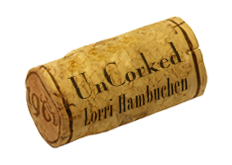 March marks Uncorked’s seventh anniversary — reinforcing the feeling that time certainly flies when you’re having fun.
March marks Uncorked’s seventh anniversary — reinforcing the feeling that time certainly flies when you’re having fun.
During the past year we’ve explored everything from flying corks to popcorn pairings.
My goal in writing this column is (and always has been) to offer honest recommendations of wines available in Arkansas, and possibly more importantly, to make the subject of wine in general approachable to everyone. Whether you’re just beginning to explore the world of wine or you’re a dedicated oenophile, my hope is this column offers something for everyone interested in wine.
Feedback, questions, ideas and column suggestions are always welcome, so please keep the cards and letters coming.
Below are some of my favorite Values and Splurges from the past year.
For a complete list of wines featured in Uncorked in the past year, e-mail uncorked@lorrihambuchen.com or write Uncorked, c/o the Arkansas Democrat-Gazette, P.O. Box 2221, Little Rock, Ark. 72203. The list is great to have on hand for a quick and easy buying reference.
THE VALUES
- 2010 Lindeman’s Bin 77 Semillon-Chardonnay, Australia (about $9 retail)
- 2010 Cupcake Central Coast Merlot, California (about $10 retail)
- 2010 Fontana Candida Frascati, Italy (about $8 retail)
- 2010 Tamas Estates Pinot Grigio, California (about $12 retail)
- 2009 Cline Cellars Sonoma County Syrah, California (about $12 retail)
THE SPLURGES
- 2009 Firesteed Riesling, Oregon (about $19 retail)
- 2009 Presqu’ile Pinot Noir, California (about $48 retail)
- 2010 A to Z Pinot Gris, Oregon (about $17 retail)
- 2009 Bell Wine Cellars Yountville Merlot, California (about $36 retail)
- 2009 Rocca Delle Macie Chianti Classico, Italy (about $28 retail)
by Lorri | Mar 7, 2012 | UnCorked
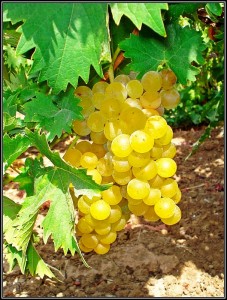 For years dry wines have been viewed as the “it” wines. But it seems Americans are sweetening their palates. Muscat is edging in as one of the most sought-after wines in the world. According to A.C. Nielsen data this sweet trend resulted in a 156.3 percent increase in sweet white wine volume in 2010.
For years dry wines have been viewed as the “it” wines. But it seems Americans are sweetening their palates. Muscat is edging in as one of the most sought-after wines in the world. According to A.C. Nielsen data this sweet trend resulted in a 156.3 percent increase in sweet white wine volume in 2010.
That’s a lot of consumers going to the sweet side.
The muscat grape, unlike many other wine grapes, is also enjoyed as a table grape. It has a distinctive flavor. If you’ve enjoyed it as a table grape, you’ll most likely instantly recognize the flavor as a wine.
The grape color ranges from white to brown to almost black and can be made into numerous styles ranging from sparkling white to the rich, dark fortified wines of Australia.
The best known are muscat blanc a petits grains (muscat blanc for short) and muscat of Alexandria. The muscat blanc grape is the oldest variety and creates the most concentrated grape flavors. It produces wines both dry and sweet. Muscat of Alexandria is used for intense dessert-style sweet wines. Muscat’s light white styles are drawing the attention of wine drinkers not only for the delectable taste of honey, peach and almond but consumer-friendly price tags.
THE VALUES
- NV Yellowtail Moscato, Australia (about $10 retail)
- 2011 Zonin Moscato, Italy (about $10 retail)
- 2011 Cavit Moscato, Italy (about $11 retail)
- 2011 Mezzacorona Moscato, Italy (about $11 retail)
- 2011 Bella Sera Moscato, Italy (about $9 retail)
THE SPLURGES
- 2009 Hugel Muscat, France (about $26 retail)
- 2011 Folonari Moscato, Italy (about $14 retail)
- 2011 Voga Moscato, Italy (about $15 retail)
 If cabernet sauvignon were known as “king” of the wine world, then chardonnay would be “queen.”
If cabernet sauvignon were known as “king” of the wine world, then chardonnay would be “queen.” Ham at Easter dinner is a common tradition the world over, and the American table is no exception. However, ham tends to be a tricky match for wine. Cooks in many parts of the world, particularly those who have been curing ham and making wine for centuries, have mastered this task. Prosciutto, jamon and presunto — with their straightforward smoky, salty flavors — are not frequently mismatched at Easter tables in Italy, Spain and Portugal.
Ham at Easter dinner is a common tradition the world over, and the American table is no exception. However, ham tends to be a tricky match for wine. Cooks in many parts of the world, particularly those who have been curing ham and making wine for centuries, have mastered this task. Prosciutto, jamon and presunto — with their straightforward smoky, salty flavors — are not frequently mismatched at Easter tables in Italy, Spain and Portugal. Finding the perfect wine to enjoy with your meal can range from an all-out ordeal to a matter of blind chance. With the vast array of wine and food choices, the combinations are seemingly endless.
Finding the perfect wine to enjoy with your meal can range from an all-out ordeal to a matter of blind chance. With the vast array of wine and food choices, the combinations are seemingly endless. New Zealand is known for its exceptional-quality sauvignon blanc, but what it may be best remembered for 30 years from now is transforming the way the wine world seals its product.
New Zealand is known for its exceptional-quality sauvignon blanc, but what it may be best remembered for 30 years from now is transforming the way the wine world seals its product. March marks Uncorked’s seventh anniversary — reinforcing the feeling that time certainly flies when you’re having fun.
March marks Uncorked’s seventh anniversary — reinforcing the feeling that time certainly flies when you’re having fun. For years dry wines have been viewed as the “it” wines. But it seems Americans are sweetening their palates. Muscat is edging in as one of the most sought-after wines in the world. According to A.C. Nielsen data this sweet trend resulted in a 156.3 percent increase in sweet white wine volume in 2010.
For years dry wines have been viewed as the “it” wines. But it seems Americans are sweetening their palates. Muscat is edging in as one of the most sought-after wines in the world. According to A.C. Nielsen data this sweet trend resulted in a 156.3 percent increase in sweet white wine volume in 2010.